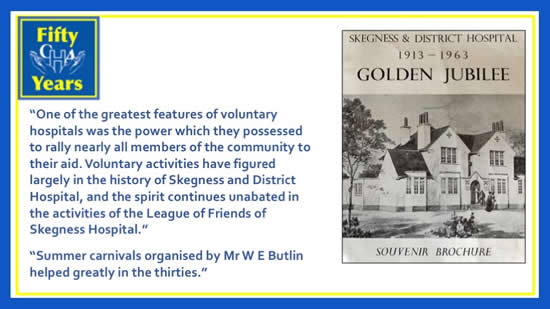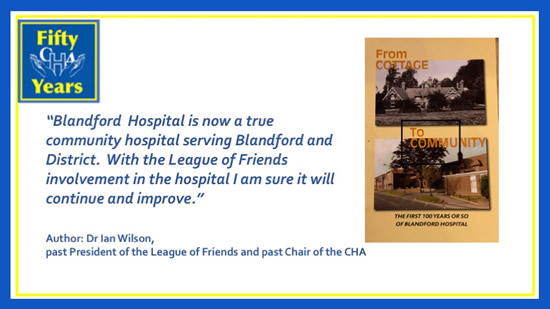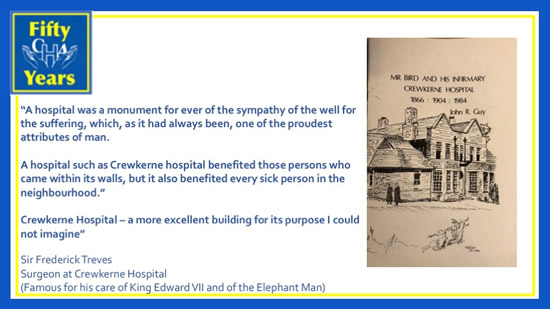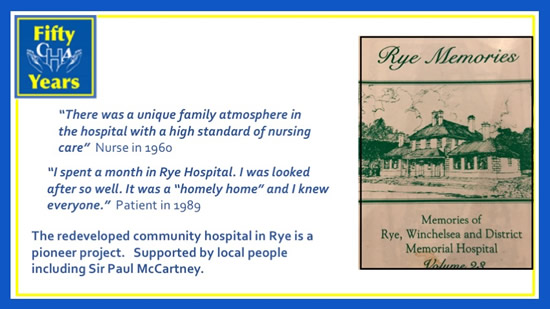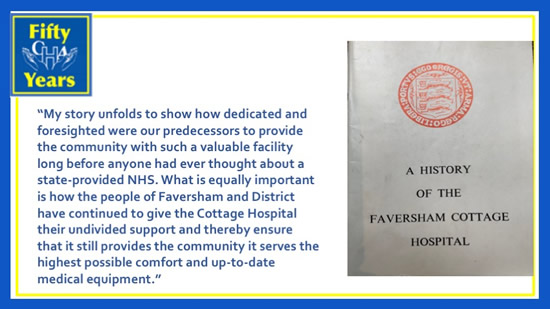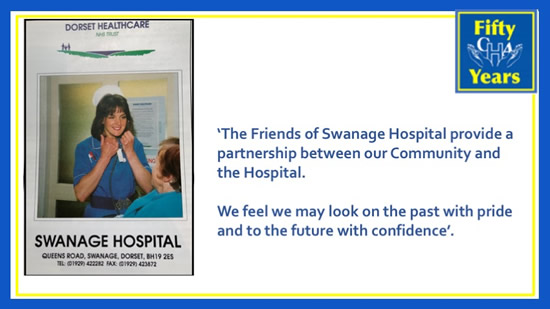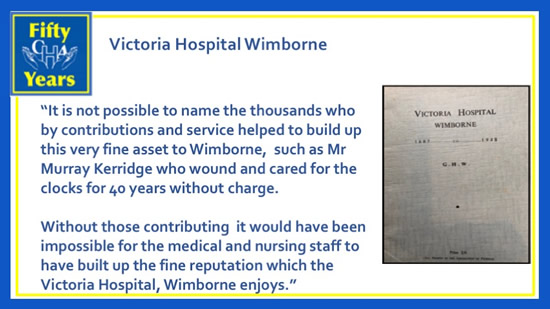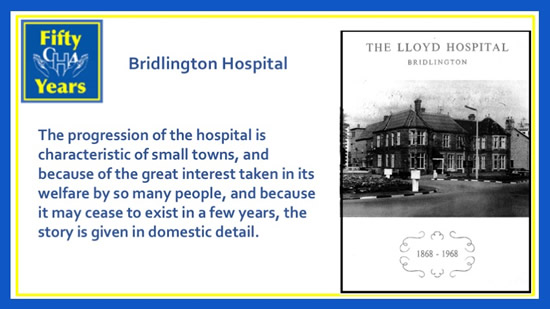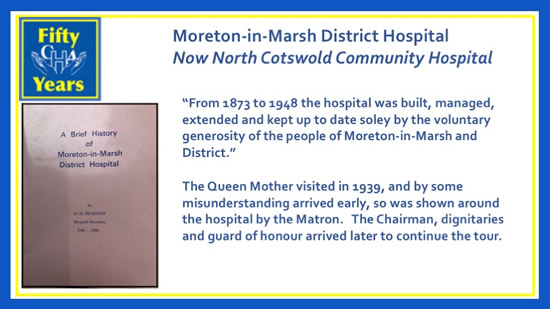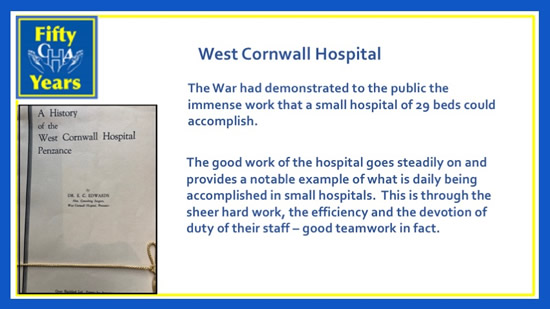Local community publications on community hospitals
The CHA has a unique library of local publications of individual community hospitals.
The pamphlets, booklets and books about community hospitals were written by local people, often supported by Leagues of Friends and made available locally. We have sought permission for sharing where possible. Thank you.
Please contact the hospitals and the Leagues of Friends if you want to get hold of a hard copy.
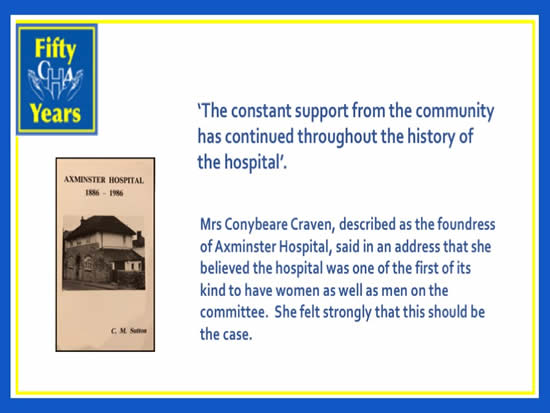
Axminster Hospital
Download PDF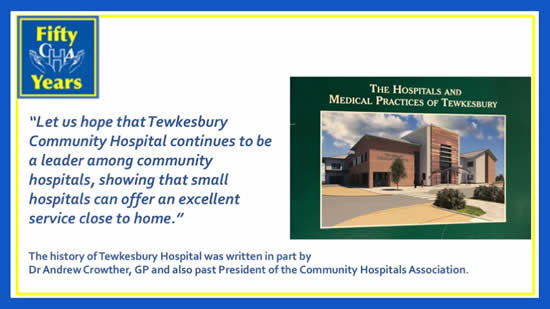
Tewkesbury Community Hospital
Download PDFAn Insight into the History of Community Hospitals
Dr Meryck Emrys-Roberts wrote a fascinating account of cottage hospitals, illustrating their development with well-informed and thoroughly researched local accounts. The late Dr Emrys-Roberts helped to found the Community Hospitals Association, and was President for many years. Meryck wrote this publication to coincide with the 21st Anniversary of the formation of the CHA. He was convinced that the special place of community hospitals could only really be fully understood through a knowledge of their history. Meryck was an inspiration to the committee and we are indebted to him for all that he did for community hospitals and his community.
The CHA has a unique collection of books and booklets written within communities to record the history of their local community hospital. We would love to have more, so if your hospital has a publication, do let us know! These publications typically trace the origin of the hospital, how it was funded and how the community has continued to support it. Often these records describe the medical and nursing changes, the types of patients treated, the equipment that was introduced, and local events. They provide a valuable insight into the hospitals and their role and standing in their communities.
Meryck Emrys-Roberts "The Cottage Hospitals 1859-1990 – Arrival, Survival, Revival" Tern Publications 1991

Crowborough War Memorial Hospital, East Sussex
We are grateful to our Treasurer, Richard Hallett for sharing the history of Crowborough Hospital. Richard continues to serve on the Friends for Crowborough Hospital, which is a busy and highly valued community hospital. Richard was instrumental in helping to retain the midwife-led maternity unit which is thriving today.
This unique record shows the way the local community worked to create and sustain their hospital. Starting off as a home for nurses who were providing home care, the facility added beds for patients and was then redeveloped as a community hospital. The booklet can be downloaded here
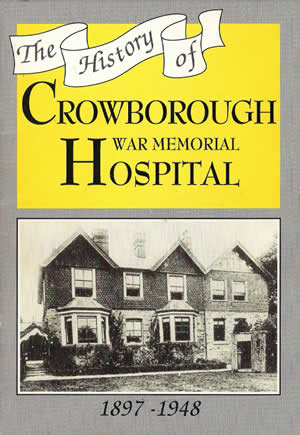
Overview of the History of Community Hospitals
Cottage and community hospitals have been part of the rural landscape for health care in England for over 150 years. The first cottage hospital was opened by Napper in 1859 in Cranleigh, Surrey. This was a simple converted cottage with space for beds and for operations. The service was established to save patients from long journeys to general hospitals in towns and cities, and to give local doctor surgeons a clean space in which to work with the support of a paid nurse. The model was swiftly copied leading to the creation of 240 cottage hospitals within the next 30 years, all funded through donations and benefactors.
Cottage hospitals attracted support through fundraising and volunteering. The hospitals had symbolic significance, with some built as war memorials or to commemorate Royal events. All voluntary hospitals were transferred into the National Health service in 1948. Hospital Leagues of Friends were formed by communities in order to continue to support their local hospital.
Cottage hospitals attracted attention in the 1970s when a new model of a cottage hospital, the "community hospital" was developed in Oxfordshire. This model was described as an extension of primary care, and a new concept of care, integrating primary care and secondary care and with a wider range of services and facilities. The role of community hospitals in providing intermediate care was more formally recognised in the 1980s. In 2006, the Government declared an investment in community hospitals, as centres for integrated health and social care. They were described in policy documents as a "a focus for community networks."
More recently, commissioners of services in England have signalled a change in community services in rural areas, in order to support people in their own home, or as close to their home as possible. The implications for community hospitals is that some of them have closed or are closing, and a number are becoming "community hubs" without inpatient beds. The community hospitals that are continuing to provide a full range of inpatient, urgent care, diagnostics, rehabilitation and clinics are tending to be the larger community hospitals, or those in very remote and rural areas.

